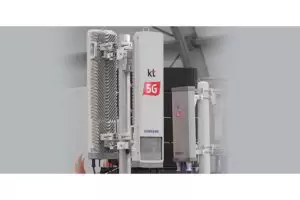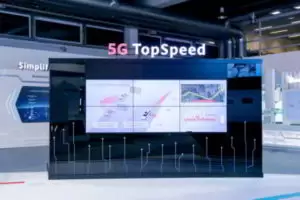
Views: 26
– The 5G generation mobile network will play a much larger role than previous generations.
Minapim by Hernan Valenzuela: The 5G will elevate the mobile network to not only interconnect people, but also to interconnect and control machines, objects and devices. It will deliver new levels of performance and efficiency that will enable new user experiences and connect new industries. 5G will deliver multi-Gbps peak rates, ultra-low latency, massive capacity and a more uniform user experience.
It’s a new kind of network, a platform for innovation that not only enhances today’s mobile broadband services, but also expands mobile networks to support a wide range of devices and services and connect new industries with enhanced performance, efficiency and performance cost. 5G will redefine a wide range of industries, with connected services from retail to education, transportation and entertainment and everything in between.
The 5G Economics study predicts that the total economic effect of 5G in the world by 2035 will be supporting a wide range of industries and potentially producing up to $ 12 trillion in goods and services, from retail to education, transportation and entertainment and everything in between. – can produce up to $ 13.2 trillion in goods and services enabled by 5G mobile technology.
The mobile 5G value chain alone could generate up to $ 3.6 trillion in revenue and generate up to 22.3 million jobs.
Over time, the total contribution of 5G to real global GDP growth is expected to be equivalent to a country the size of Italy. Italy is currently ranked as the eighth largest economy in the world.
The 5G is already here and is fueling a new era of innovation that will redefine consumer experiences and drive transformation across all industries. This new generation of mobile technology will also enable new services and industries that we have yet to imagine.
As organizations develop and adopt disruptive technologies, the common thread will be cyber risk management. For many organizations, this means a cultural shift to greater collaboration and awareness across the enterprise to meet the cyber demands of the future.
The 5G Challenges in Connectivity: How Can We “Connect”? How will we have the best transportation in a world of varied connectivity? What communication is needed from cars to the Internet, between vehicles, smart cities or other modes of transport? These are still evolving topics as their best solutions.
Studies predict that 70% of IoT devices will use cellular connections by 2022. Using 5G in transmission / automation in the transportation sector opens the potential for improving quality of life, reducing accidents and fatalities, and improving mobility and independence for millions. But with so many new players sharing physical space and automated vehicle space, how do we ensure the safe introduction of technology into our roads?
The 5G can be broadly classified into three main types of connected services:

- Improved mobile broadband: 5G will not only make our smartphones better, but will also introduce new immersive experiences, such as VR and AR, with faster and more uniform data rates, lower latency and cost per bit.
- Mission-critical communications: 5G will enable new services that can transform industries with ultra-reliable / available, low-latency links – such as remote control of critical infrastructure, vehicles and medical procedures.
- Mass IoT: 5G will seamlessly connect a large number of sensors embedded in just about everything, through the ability to reduce data rates, power and mobility to deliver extremely lean / cost effective solutions.
- A defining feature of 5G is also the design for direct compatibility – the ability to flexibly support future services that are unknown today.
The 5G speed, according to IMT-2020 requirements, 5G must provide peak data rates of up to 20 Gbps. But 5G is more than how fast it is. In addition to higher peak data rates, 5G will provide much more network capacity, expanding to a new spectrum such as millimeter waves (mmWave).
The 5G will also provide much lower latency for faster immediate response and a more uniform overall user experience, so data rates remain consistently high even when users are on the move. In addition, the new 5G NR (New Radio) mobile network will be supported by the creation of Gigabit LTE coverage, which will provide ubiquitous Gigabit class connectivity.
The new 5G NR air interface features many key wireless inventions and the top five are:
- Scalable OFDM Numerology with 2n Subcarrier Spacing Scale
- Flexible, dynamic and independent TDD subframe design
- ca coding flexible and advanced LDPC
- Advanced technologies of massive MIMO antenna
- Advanced Spectrum Sharing Techniques
Difference between 4G and 5G
- 5G is a unified platform that is more capable than 4G
- 5G uses better spectrum than 4G
- 5G is faster than 4G
- 5G has more capacity than 4G
- 5G has latency less than 4G
A 5G user will be able to seamlessly use 5G, 4G and Wi-Fi as the 5G will go live with 4G and Wi-Fi, allowing it to be simultaneously connected to 5G New Radio (NR), LTE or Wi-Fi. Similar to Wi -Fi, the 5G NR will also be designed for unlicensed spectrum without the need for licensed spectrum access, allowing more entities to deploy 5G and enjoy the benefits of 5G technology.
Understanding or invoicing network, 5G’s next big thing
A distinctive feature of the 5G system architecture is network splitting, which allows for the personalized use of networks to meet different business and industry needs.
One hundred times faster than 4G and enabling new services for smart cities, smart homes, wearables, healthcare and more, 5G is ready to redefine the digital lifestyle.
From augmented and virtual reality use cases to allowing users to stream superior video, there is no single, definite goal for 5G and its features. Network slicing, a feature introduced in 5G, will open more customizable access and performance options that promise to improve efficiency.
The 5G Network Slicing
With network slicing, a single 5G network can be split into multiple virtual networks that enable specific and optimized support for different use cases. Networks developed in network slicing are formed on demand and can perform different functions across vertical industries, businesses, and application types.
What this means is that while existing networks serve all functions and customers – for example, utilities, manufacturing, and automotive – as one, network slicing allows operators to select smarter customizations based on the rate of transfer, latency, data speed, and more to meet your needs. client and make the network as a whole more efficient.
What does it mean for business
Because 5G networks can be organized into these slices, each slice will require different security features depending on the use case. New security requirements for 5G mean that each network slice will have device authentication that ensures devices destined for a specific network slice are approved but cannot run on another slice, addressing some of the security vulnerabilities found in 3G. and 4G.
The flexibility of network slicing will also reduce costs and optimize the performance of each slice.
The Consumer Technology Association (CTA) ® introduced some potential network split use cases, where the diversity of network requirements for each case shows how network splitting can increase productivity and improve pricing for a business:
- Augmented reality.
- Massive IoT.
- manufacturing facility.
- Magnetic resonance image transfers.
- Corporate video session.
The 5G offers many benefits, and network slicing enables new efficiencies that will only improve the speed and performance of next generation connectivity.
The 5G is opening a new chapter in business
The 5G’s increased bandwidth and increased capacity is rocking the entertainment industry, such as Walt Disney Studios and The New York Times, harnessing 5G’s potential to redefine the way they do business.
The debut of fifth-generation wireless data networks marks a major victory in wireless technology, promising Internet speeds exponentially faster than 4G. When consumers can download a 90-minute movie in just 10 seconds, it opens a new chapter for content delivery and creation.
The hallmark of these companies has been technology and innovation. The New York Times will bring your articles to life using digital displays integrated with AR / VR.
Walt Disney Studios, New York Times are partnering with Verizon – a company qualified to speak in the fifth generation of wireless – to harness 5G’s storytelling potential.
In this sense, companies have created a center and program for innovation, dedicated 5G Labs that allow experimentation.
The 5G Transmission Equipment
For Samsung 2020 could be a critical year for the 5G, the South Korean technology giant hopes to take on the dominant role of Huawei today.
By 2019, Samsung had only a 6.6% share of the overall equipment market, compared with Huawei’s 31%. Samsung hopes to capture more than 20% of global 5G equipment market by 2020
In 2019, Huawei ranked first in the global telecommunications equipment market with a 31% market share, followed by Ericsson with 29.2% and Nokia with 23.3%.
European players are also winning global contracts as about 50 of them are preparing to launch commercial 5G services with Huawei equipment.
Nokia said last year that it had won 42 5G commercial deals with operators worldwide – 22 of them with major customers like T-Mobile, Telia Company and SoftBank.
The 5G is opening the door for some nontraditional vendors because some 5G features can be implemented via software rather than hardware. In Japan, Rakuten Mobile used NEC to help it build a cloud-native 5G network that will rely on a software-based radio access network. NEC will build a massive MIMO 5G antenna radio unit that will operate in the 3.7 GHz spectrum band. In addition, Rakuten said it is working with Nokia, Altiostar, Cisco, Mavenir, Intel, Qualcomm and Airspan. The company’s network launch was originally scheduled for October, but was postponed to early 2020.
Related article: Nokia builds strategic ecosystem partnership to bring 5G networks and IoT in Japan
Did you like the article? Subscribe to the newsletter,
